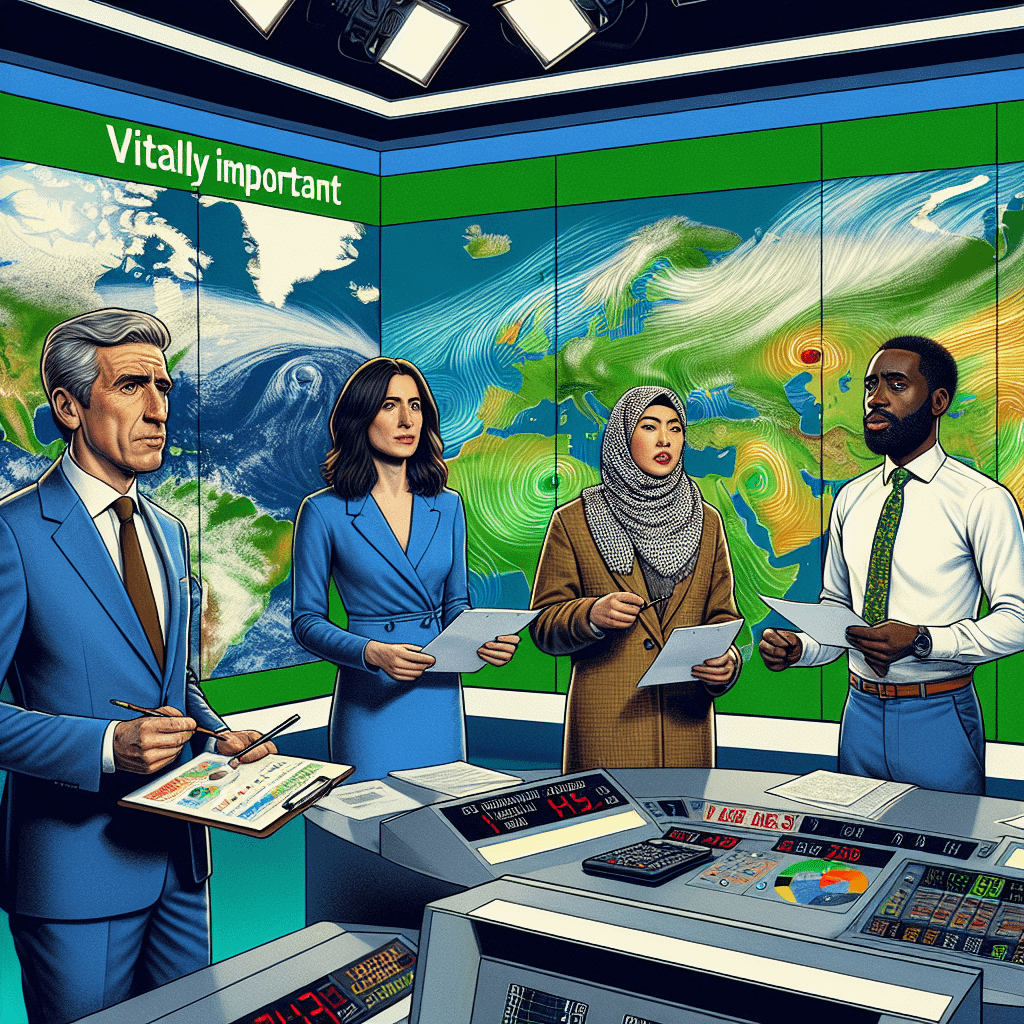Tim Jagielo/WNIN News WEVV Meteorologist Jonathan Weaver gives his forecast before a green screen.
TV Meteorologist Jonathan Weaver is standing before a green screen, ready for his first afternoon weather segment at WEVV channel 44 in Evansville. He’s sound checking his mic and earpiece with director Jackson Webster.“Testing, 1-2-3, how you doing? Clear skies out there some high level clouds …”He’s had a lot of nice weather to report, but this year it hasn’t always been that way.“There was a busy three months there where we were exhausted, working all the time, reporting on severe weather,” he said. “There is a belief, and I believe too that it seems like severe storms are more numerous than the past.”But some meteorologists like Weaver, according to a study by George Mason University, prefer not to talk about climate change on-air. He doesn’t feel educated enough on the topic.He’s been advised to not use the term specifically because the term has become divisive. Even though the same training materials he received, suggest that more than half of their viewers consume weather news to see climate’s effect on weather.John Kotcher is research director at the Center for Climate Change communication at George Mason University.“Nobody’s denying that there are hurricanes bearing down on these communities, but what they do need help with is understanding how that connects back to climate change, and how that climate change itself connects back to human activities, most importantly, the burning of fossil fuels,” he said. “And so there’s an opportunity there.”President-elect Donald Trump recently appointed a fossil fuel executive as his Energy Secretary. Chris Wright, according to the Associated Press, could give fossil fuel a boost and end some climate-friendly policies.File Photo/WNIN News National Weather Service Warning Coordination Meteorologist Christine Wielgos leads an in-person storm spotter training session at Owensboro Community College in late October.
National Weather Service Warning Coordination Meteorologist Christine Wielgos is leading a Storm Spotter training session at Owensboro Community College this fall, coaching the attendees on properly reporting hail size.“When hail falls in your backyard, it’s not going to be all uniformly one inch in diameter, right?”It’s especially important not to report hail as “marble sized.”But the course overall is meant to teach the everyday citizen how to “look out for and spot and report severe weather,” Wielgos said.The NWS is under the umbrella of the National Oceanic and Atmospheric Administration (NOAA.)The official stance of NOAA is that climate change is happening and it’s likely caused by humans. But Wielgos said the NWS does not use their platform to discuss climate change.“Our forecasters deal with the next seven days worth of weather, and so that’s their forte, and that’s we kind of stay in our lane, so to speak.”She does however talk about
“Climate Change: A Crucial Topic for Weather Forecasters – Professional Tips for On-Air Discussions”

